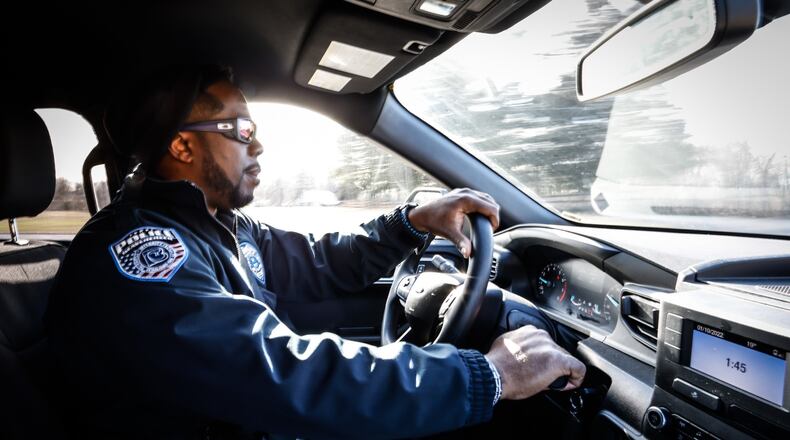“When I started, we had dozens of applicants per posting, now its maybe 10 or 12,” he said.
Competition for both police and firefighter candidates has skyrocketed in the last few years. Fewer people are choosing careers in law enforcement, a trend local law enforcement agencies have seen nearly across the board.
“Because of the perceived negative attitude of the public toward the police, and the over embellishment of the national media about this backlash against the police, most young people do not see policing as a desirable profession,” Xenia police chief Donald Person said. “The irony to all of this is that most small- to mid-sized cities in the Midwest have seen nothing but support from their local communities.”
| City | # Officers | Population | Call volume/yr |
|---|---|---|---|
| Beavercreek | 50 | 46,549 | 40,540 |
| Riverside | 29 | 24,474 | 19,654 |
| Kettering | 86 | 57,862 | ~60,000 |
| Fairborn | 52 | 34,510 | 55,508 |
| Xenia | 47 | 25,441 | 24,558 |
| Centerville | 41 | 24,240 | 12,789 |
| Dayton | 354 | 137,644 | ~114,000 |
| Greene County Sheriff | 64 corrections, 31 patrol | 167,996 | 64,611 |
Dwindling candidate numbers isn’t the only factor contributing to a declining police workforce. More police officers are leaving departments long before retirement age.
“Less applicants are filing, less applicants are qualified, and more officers are leaving once they become retirement eligible,” said Dr. Patrick Oliver, professor of law enforcement at Cedarville University. “You can see agencies are being squeezed on both ends. That is, in essence, the workforce crisis.”
According to a 2019 study by the Police Executive Research Forum, most of these departures are within the first five years. Additionally, officers that become eligible for retirement are leaving sooner instead of maximizing their retirement benefits.
The coronavirus pandemic has done nothing but exacerbate the problem. Cases of illness and quarantine means multiple jurisdictions are posting significant overtime and operating with fewer officers on the ground.
“The department has seen a recent increase in staff being off due to COVID exposures, mainly due to contacts made outside of the workplace,” said Dayton’s Lt. Col. Eric Henderson.
In 2021, 67% of national police deaths were caused by COVID-19, up from 62% in 2020, according to the Officer Down Memorial Page, a database that tracks line of duty officer deaths. Between 2020 and 2021, 587 law enforcement officers have died of COVID-19.
The shortage is perhaps most keenly felt by correctional officers, who see a typically much higher employee turnover rate than patrol officers. The Greene County Sheriff’s Office currently has 64 corrections officers and 31 patrol officers, but would hire nine more and three more officers in each department respectively.
The shortage also creates a crisis in the talent and quality of officers, Oliver said, adding that the quality of the agency is equivalent to the quality of the officers hired.
“The top two things law enforcement agencies can do is to grow their own talent. You work to recruit people before they’re able to be hired based on age,” Oliver said. “The second is targeted selection. Who succeeds in the job? What are those critical success factors? Develop a profile of who succeeds in the job, and then go find people that match that profile and recruit them.”
Cedarville University and Central State University offer a “college to law enforcement pathway program” to juniors and seniors majoring in criminal justice. Students are guaranteed an entry-level job with one of 12 participating law enforcement agencies upon graduation.
Dayton, Xenia and Beavercreek join the Greene County Sheriff’s Office in looking to increase the number of police officers on their payroll in the next few years, with Dayton progressing towards an average of 365 officers by 2024.
Beavercreek said it needs to five police officers to its force, but because of funding issues at this time cannot.
Additionally, the sheriff’s office partners with the Greene County Career Center’s Peace Officer Training Academy to hire candidates directly out of school, and involves the larger department staff in the candidate hiring process. Recruitment and retention is among Greene County Sheriff Scott Anger’s top priorities, Anger previously told the Dayton Daily News.
“It’s going to be a societal thing, getting people to the point where they’re positive about the opportunities that are available in law enforcement,” Anger said. “It’s a very good job. It’s a tough job, but it’s a good job.”
About the Author

